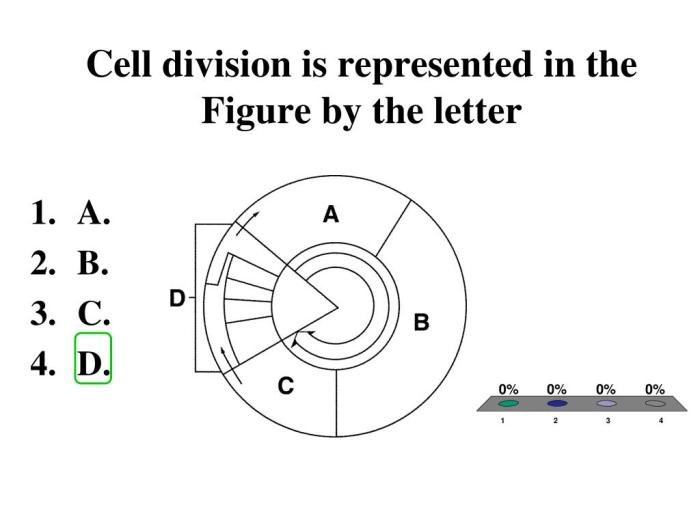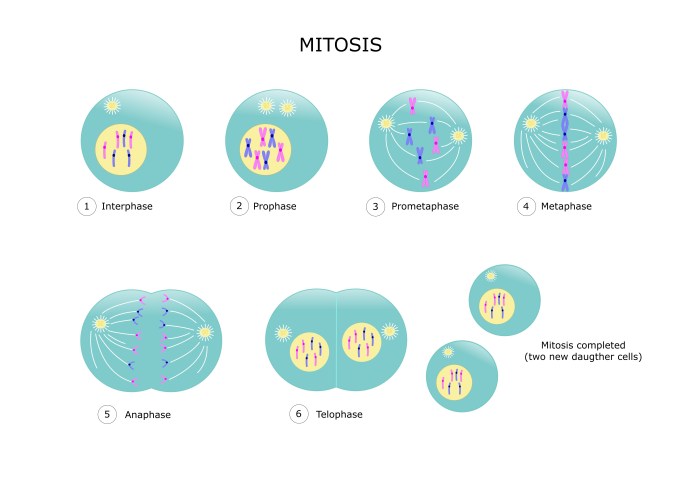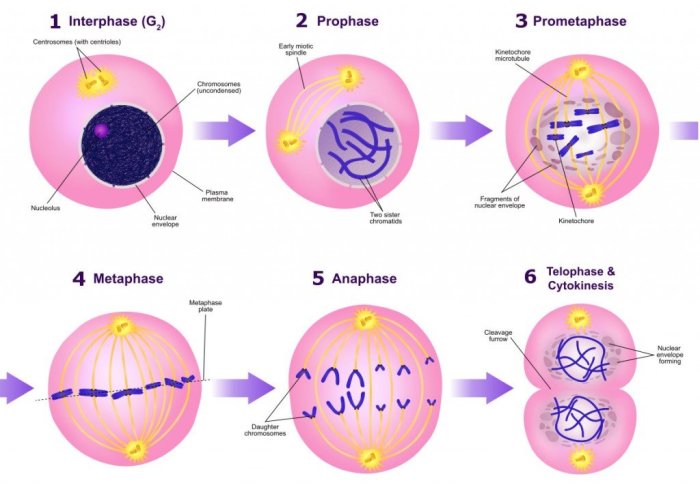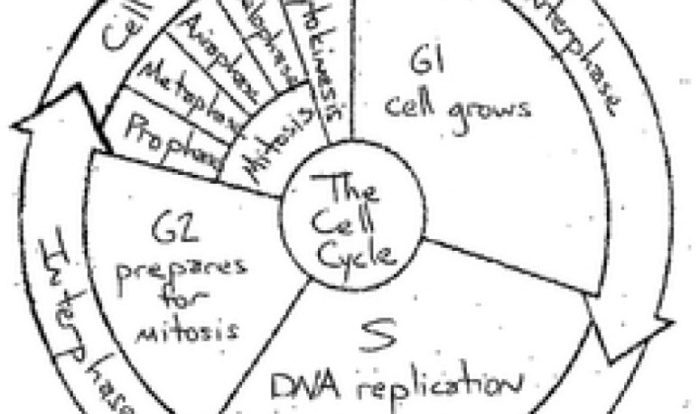Cell division is represented in Figure 10-1 by the letter, and it is a fundamental process in biology. It ensures the growth, development, and repair of tissues. This guide will provide a comprehensive overview of cell division, its phases, and its significance.
Cell division is a complex process involving several stages, each with distinct events. Understanding these stages is crucial for comprehending the mechanisms that govern cell division and its role in maintaining tissue homeostasis.
Cell Division: Cell Division Is Represented In Figure 10-1 By The Letter

Cell division is the process by which a cell divides into two or more daughter cells. It is essential for growth, development, tissue repair, and the maintenance of tissue homeostasis.
Identify the Different Phases of Cell Division, Cell division is represented in figure 10-1 by the letter
The phases of cell division are depicted in Figure 10- 1. They include:
- Interphase: The period between cell divisions, during which the cell grows and prepares for division.
- Prophase: The chromosomes become visible and the nuclear envelope breaks down.
- Metaphase: The chromosomes line up in the center of the cell.
- Anaphase: The chromosomes separate and move to opposite ends of the cell.
- Telophase: Two new nuclear envelopes form around the chromosomes and the cell membrane pinches in the middle, dividing the cell into two daughter cells.
Analyze the Role of Chromosomes in Cell Division
Chromosomes are the structures that carry genetic material. During cell division, the chromosomes are duplicated and then separated into two sets, one for each daughter cell. This ensures that each daughter cell receives a complete set of chromosomes.
Describe the Structural Changes in the Cell During Division
During cell division, the cell undergoes a number of structural changes. These changes include:
- The formation of the mitotic spindle: The mitotic spindle is a structure that helps to separate the chromosomes during anaphase.
- Nuclear envelope breakdown: The nuclear envelope breaks down during prophase, allowing the chromosomes to move freely within the cell.
- Cytokinesis: Cytokinesis is the process by which the cell membrane pinches in the middle, dividing the cell into two daughter cells.
Compare and Contrast Mitosis and Meiosis
Mitosis and meiosis are two types of cell division. Mitosis is used for growth and repair, while meiosis is used for sexual reproduction. The key differences between mitosis and meiosis are summarized in the following table:
| Feature | Mitosis | Meiosis |
|---|---|---|
| Number of daughter cells | 2 | 4 |
| Behavior of chromosomes | Duplicated chromosomes separate and move to opposite ends of the cell. | Duplicated chromosomes pair up and then separate, resulting in four daughter cells with half the number of chromosomes as the parent cell. |
| Purpose | Growth and repair | Sexual reproduction |
Explain the Regulation of Cell Division
Cell division is regulated by a number of mechanisms, including:
- Checkpoints: Checkpoints are points in the cell cycle where the cell checks for errors before proceeding to the next phase.
- Growth factors: Growth factors are proteins that stimulate cell division.
- Cellular signaling pathways: Cellular signaling pathways are networks of proteins that transmit signals from the outside of the cell to the nucleus, where they can regulate cell division.
Illustrate the Importance of Cell Division in Biological Processes
Cell division is essential for a number of biological processes, including:
- Growth: Cell division is necessary for the growth of an organism.
- Development: Cell division is necessary for the development of an organism from a single-celled zygote to a multicellular organism.
- Tissue repair: Cell division is necessary for the repair of damaged tissue.
- Maintenance of tissue homeostasis: Cell division is necessary for the maintenance of tissue homeostasis, the process by which the body maintains a constant internal environment.
Abnormal cell division can lead to a number of pathological conditions, including cancer.
Questions and Answers
What are the different phases of cell division?
Cell division consists of several phases, including prophase, metaphase, anaphase, and telophase. Each phase involves specific events, such as chromosome duplication, alignment, and separation.
How do chromosomes behave during cell division?
During cell division, chromosomes undergo duplication, alignment at the metaphase plate, and separation into daughter cells. This ensures the equal distribution of genetic material.
What is the significance of cell division?
Cell division is essential for growth, development, tissue repair, and maintaining tissue homeostasis. It allows organisms to grow, replace damaged cells, and reproduce.



